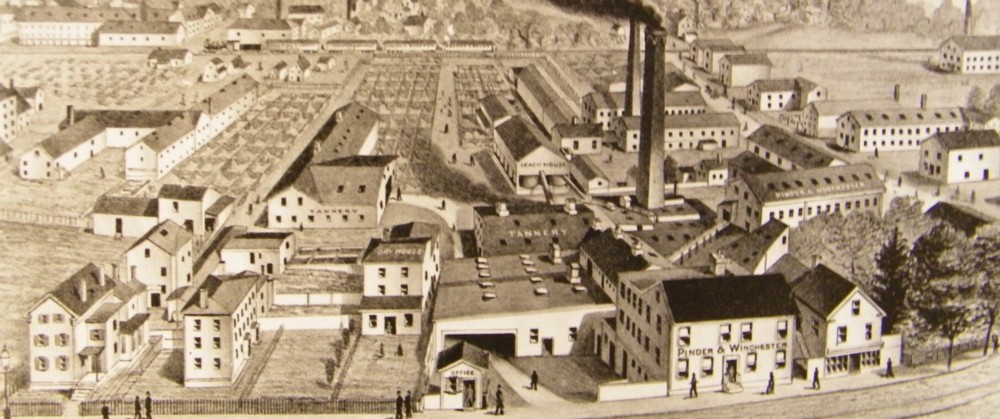
Peabody was once a major leather processing center In 1739 a leather tanning business was started in then South Danvers. An abundant supply of pure water and closeness to trading ports led to the opening of other firms. By 1835, the town had 3500 vats being used for tanning leather. Peabody became a new home for people from around the world. They experienced the hardships of moving to a strange place, and struggled with transplanting their own cultures while learning to become Americans. When immigrants from Finland began arriving in the Salem-Peabody area in 1893, many of them found work in the leather factories of Peabody. By 1870, Peabody had emerged as a vital industrial center. Technological advances made tanning more efficient and profitable. By 1914, Peabody and Philadelphia were the largest producers of leather on the East Coast.
Finnish immigrants established a church Many of the Finnish settlers lived on a hill above the tanneries. The nearest Finnish congregations were on Cape Ann. There were few pastors available, those who served coming occasionally from as far away as New York. Seamen’s Mission pastors came to Cape Ann to perform ministerial duties on occasion. Dreams of establishing a congregation finally came true at a meeting in January 1904. The first officers elected at the first congregation meeting in January 1904 were Antii Hiltunen as chairman, Kustaa Kleemola as secretary, and Antii Venalainen as treasurer. The members of the council were Vihtori Make, Johan Martiila, Werner Peura and Victor Laakso. St John was chartered by the Commonwealth and the congregation was accepted into the Suomi Synod in 1909. Services were conducted in Finnish until 1972. Beginning in 1955, services were also conducted in English.
The leather industry dominated Peabody for over a half century, peaking in the 1960s followed by a steady decline. With the enforcement of environmental regulations and the closing of single-owner shops, the leather industry has disappeared from the city. But descendants of the early Finnish immigrants remain.

